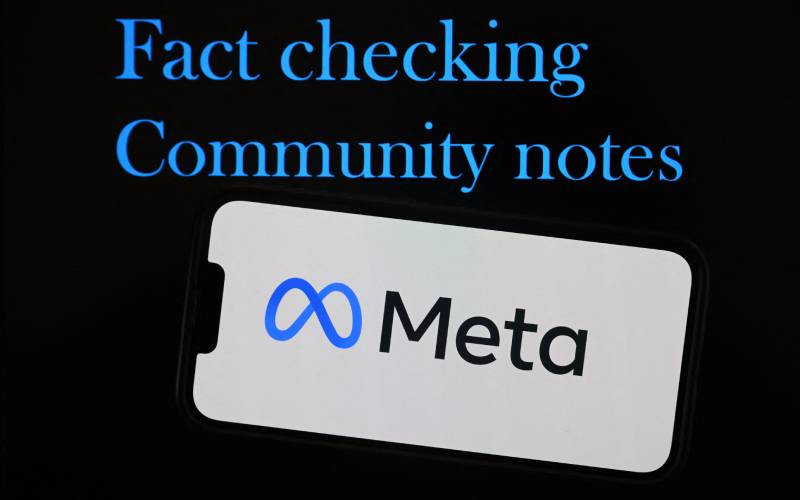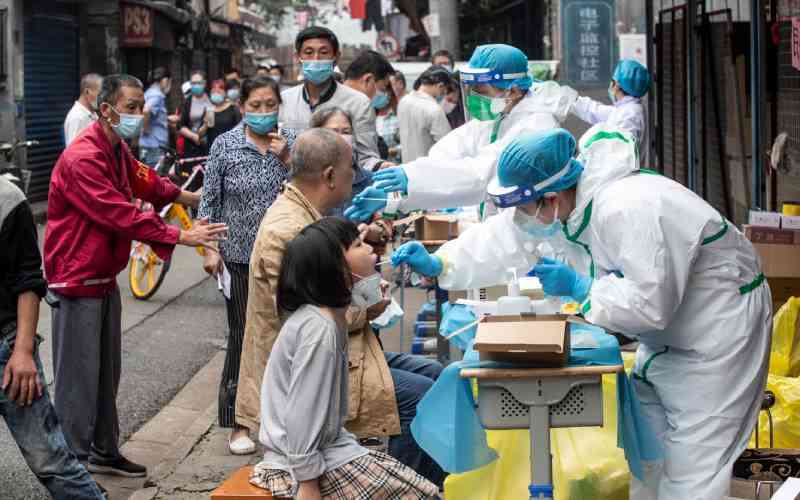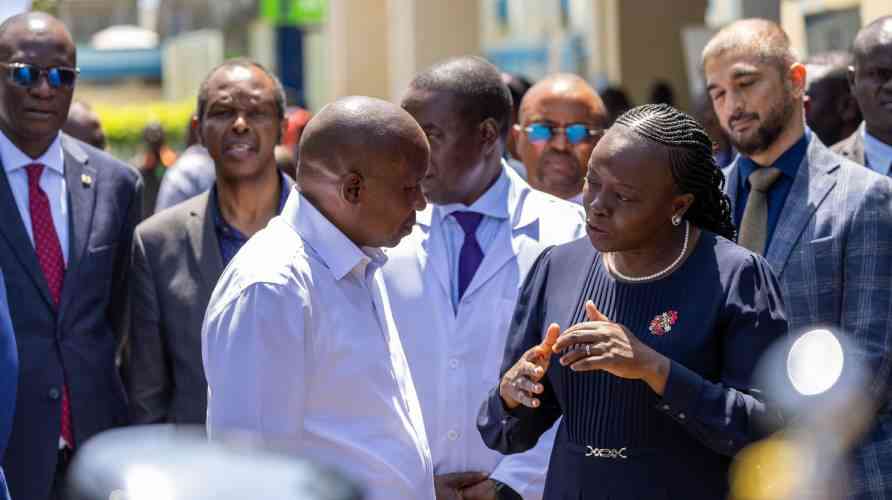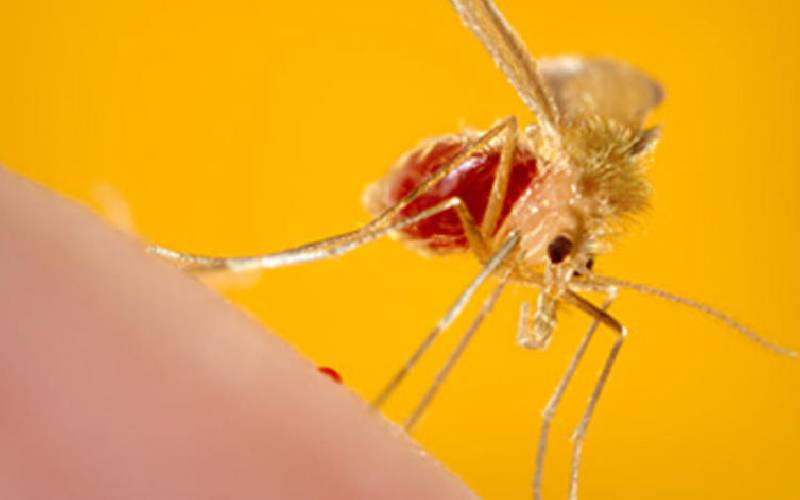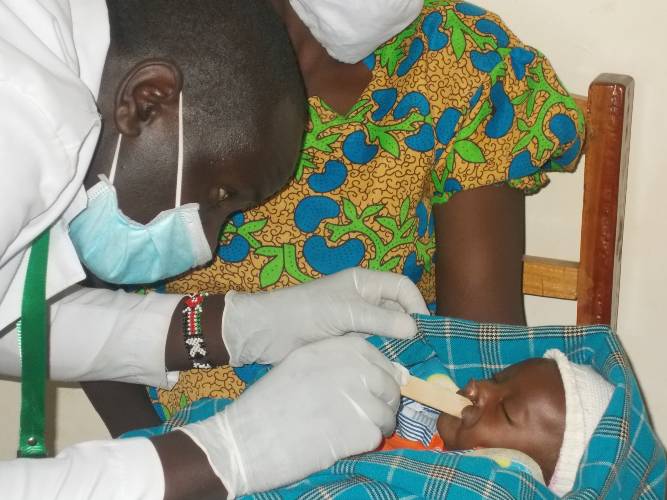
Approximately one in every 1200 Kenyan babies is born with a cleft lip or cleft palate. Cleft lip refers to a birth defect which a child is born with. It normally occurs on the upper lip where the lip is divided at the middle, one side or both side. For some you get a division on the face from the lip to the eye.
Baby Ezekiel Wanjala (Pictured) happens to have been born with a cleft lip and will undergo the first surgery at Dreamland Mission Hospital in Bungoma County.
Such surgeries had been stopped for a while as a measure to combat the spread of Covid -19, but now thanks to global cleft charity Smile Train and local partners, free cleft surgeries are back.
According to Smile Train Africa Vice President and Regional Director Dr. Esther Njoroge-Muriithi a number of cleft patients have been awaiting surgeries since they were postponed in April.
“At Smile Train Africa we are delighted that, where possible, patients can now receive safe cleft surgeries that will enable them to live full and productive lives. Over the last two months, there have been approximately 2500 patients who were not able to receive treatment. Though the surgeries were postponed, our comprehensive cleft care and partnership model enabled us to get back on track swiftly and sustain access to safe treatment for our patients,” said Dr. Njoroge-Muriithi.
Cleft lip remains a condition that is expensive to treat since most insurance companies do not include it in their packages.
According to Dr. Tom Osundwa a Maxillofacial surgeon, the most plausible theory to explain why cleft lip and palates occur is that the defect is brought about by a multisectoral factors.
“A vast majority of cleft is formed due to genes and environmental factors. The biggest environmental factor is nutrition where by folic acid plays a very critical role. Low folic acid during the first trimester of a mother’s pregnancy may predispose the child to get a cleft lip. Other key nutritional requirements include, Iron, Zinc and Vitamin B complex,” says Dr. Osundwa.
“Some antimalarial drugs may also bring out cleft lip in children when used by a mother in her first trimester, alcohol consumption, cigarette smoking, some metabolic disease like diabetes may result to giving birth to children with high body weight and cleft lip syndrome,” he further adds.
For every child with a cleft lip and palate that is not attended to, translates to a loss in the country’s economy. In a study featuring Smile Train that was published in the most recent evaluation of the World Journal of Surgery, the returns that could come out of surgeries on individuals with cleft lips and palate equals to more than 200 times.
“When I see a child born with a cleft I see potential. I have seen children whom I have operated on and they have managed to go to the university and get good jobs. I also see what it means what it is like not to take care of them because they fail to reach their potential and even economical potential. This translates to lost money for the country,” says Dr. Osundwa.
“A surgery may be expensive considering surgery on one lip can cost about Sh200,000 which may not be affordable to a majority of the population. Most of the cleft lip and palate patients are treated by Non-profit organizations like Smile train and Operation smile international. They give support to children born with cleft lip in hospitals and at times work on outreach programs,” he adds.
Most Insurances ignore these deformities which becomes expensive to treat. Dr. Osundwa informs Standard Digital that treatment for cleft lip and palateis long-term.
“You will find a child who was born with it will undergo a surgery at 3 months, at 1 and half years, 7 years and another one at around 13 to 14 years this becomes quite expensive.”
Reduced access to timely specialist services, widespread malnutrition, high disease burden, and unmet medical/surgical needs, raises the risks of children born with cleft lip and palate.
According to the National Strategic plan in 2012, the estimated disease level was about 30,000 untreated cases in the country.
Although Africa has the lowest disease incidence it has the highest disease burden since there is not enough capacity to manage the disease creating a number of untreated disease.
Dr. Osundwa argues that there is an increased incidence of cleft in low social economic setups, where there’s conflict like Somalia.
“We treat a number of Somalia residents. Many of the conflict areas lack routine clinics which makes it hard to treat the many cleft palate incidences.”
Such defects are usually accompanied by a lot of myths and misconceptions in the community which result to a lot of stigmatization for the individuals and families at large.
Smile Train has so far sponsored more than 3,000 hands-on training opportunities, 30,000 opportunities to participate in cleft conferences, and 40,000 virtual cleft training opportunities to build capacity and confidence of Kenyan specialists.
“In Kenya we have the resources needed to treat cleft lip and palette. Doctors have been well exposed and trained with the best international professionals. We have been servicing the East African region which has increased our potential,” argues Dr. Osundwa.
He further adds;
“Let us embrace families that have these afflictions. There is nothing about witchcraft these is a congenital problem that is brought forward due to genetics or environmental factors.”
As Smile Train partners resume life-saving cleft surgeries in Africa, services will be primarily guided by the in-country measures put in place by the Ministry of Health.

